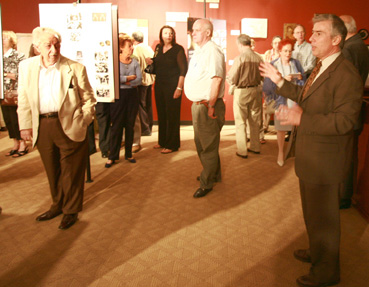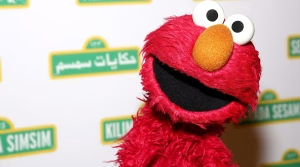Exhibit focuses on Greece during Shoah
Published May 29, 2007
Sterna Pintu has no photographs of when she was a child and does not remember most of her childhood, including that she was Jewish.
Pintu’s story is one of 16 on display at the Nicholas and Theodora Matsakis Hellenic Culture Center at the University of Missouri –St. Louis in an exhibit called “Hidden Children in Occupied Greece.”
“The exhibit is about the life of 16 Jewish children from Greece who were saved during Nazi occupation with the help of Christian groups,” said Batya Abramson-Goldstein, executive director of the Jewish Community Relations Council.
The exhibit on display through June 15 shows a story not usually told about the Holocaust.
“There has not been much focus on what has happened in Greece during the Holocaust,” Abramson-Goldstein said. The display at UMSL is specifically devoted to telling the stories of Greek Jews and how they survived the Nazi occupation in the early 1940s.
One such story is that of Pintu, who was born in Thessaloniki, Greece in 1932. As a child, the death of her father prevented her family from escaping when Nazi Germany took over Greece. Pintu was taken in by a Greek family and in order to not stand out, she used the false name of Maria Grigoriadou.
In Pintu’s story, she recalls the experience of returning to her neighborhood after Nazi occupation: “And when we were there, the whole neighbourhood gathered around me and everyone pretended they did not know me…I was asking the neighbours when Germans carried our things away, did by chance any photographs fall out? I do not want anything more, just a photograph of my parents. If you find something…”
Jennifer Glaubius, curator at the Hellenic Culture Center at UMSL, said all of the children were hidden away and separated from their real families, but the children were given new families in Greece.
“Some of these children didn’t know they were Jewish. A lot of people don’t know how they were affected. Some had to take on different names,” Glaubius said.
Abramson-Goldstein said the stories teach a lesson that can still be used today.
“We have a responsibility to each other, to not stand by when horrors like this are being committed,” she said. “It’s a lesson of history, that individuals can make a difference. They have an obligation. There’s living evidence in these 16 lives.”
Glaubius said the stories were gathered from files that officials in Nazi Germany originally compiled about Jews. After Nazi Germany conceded Greece, the files were handed over to the Greek State, who turned them over to the Jewish Museum of Greece.
“They were pieced together from people’s remembrances,” Glaubius said.
In addition to Jewish Community Relations Council of St. Louis, the St. Louis Holocaust Museum and Learning Center, the Consulate General of Greece in Chicago, the Hellenic Government-Karakas Family Foundation Professorship in Greek Studies and the Center for International Studies all co-sponsored the exhibit.
“Hidden Children in Occupied Greece” is on display at the Hellenic Culture Center, located in 210 Lucas Hall at the UMSL through June 15. The center is open on Tuesdays from 11 a.m.-3 p.m., Wednesdays from 1- 5 p.m. and Fridays 3-7 p.m.















